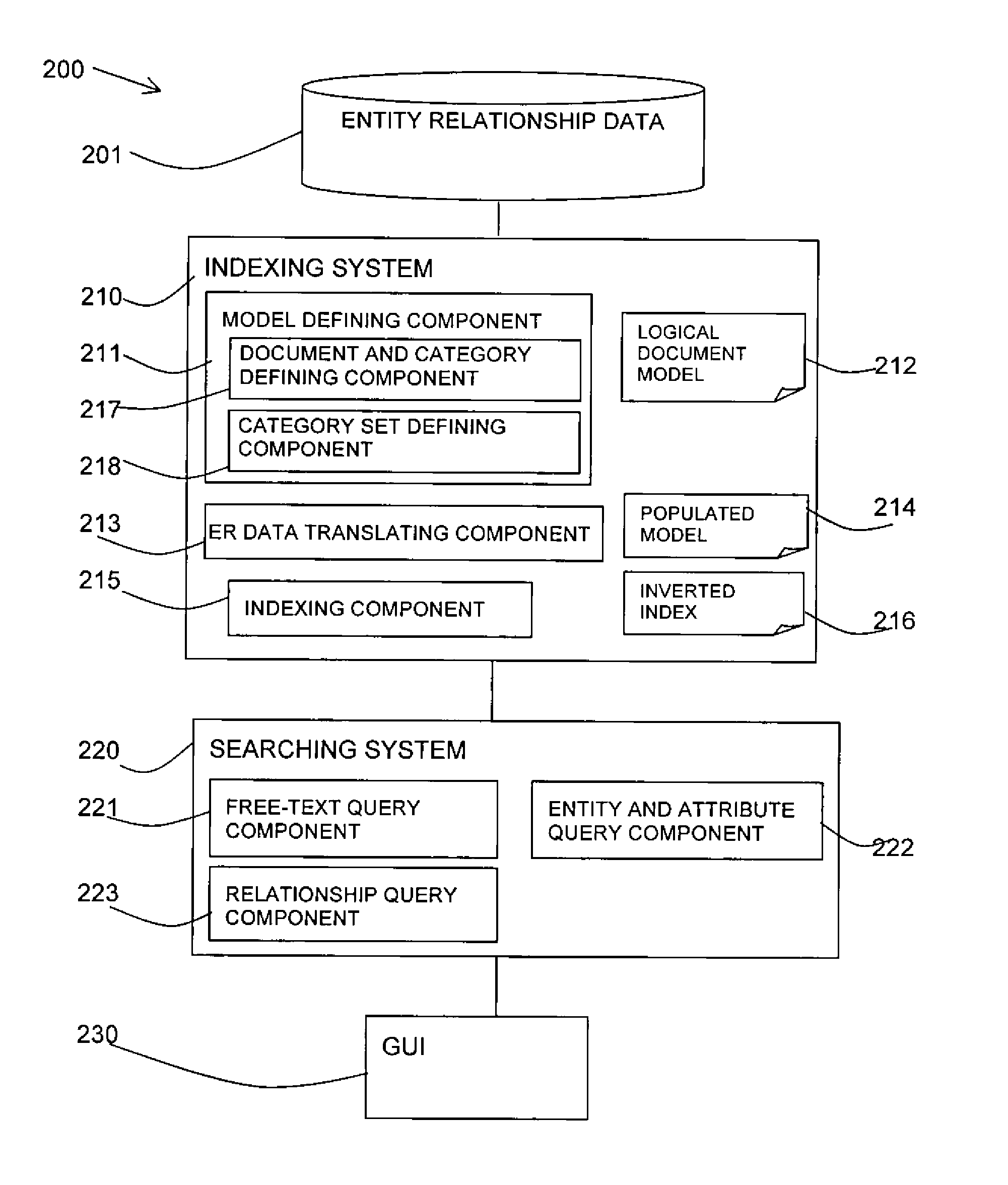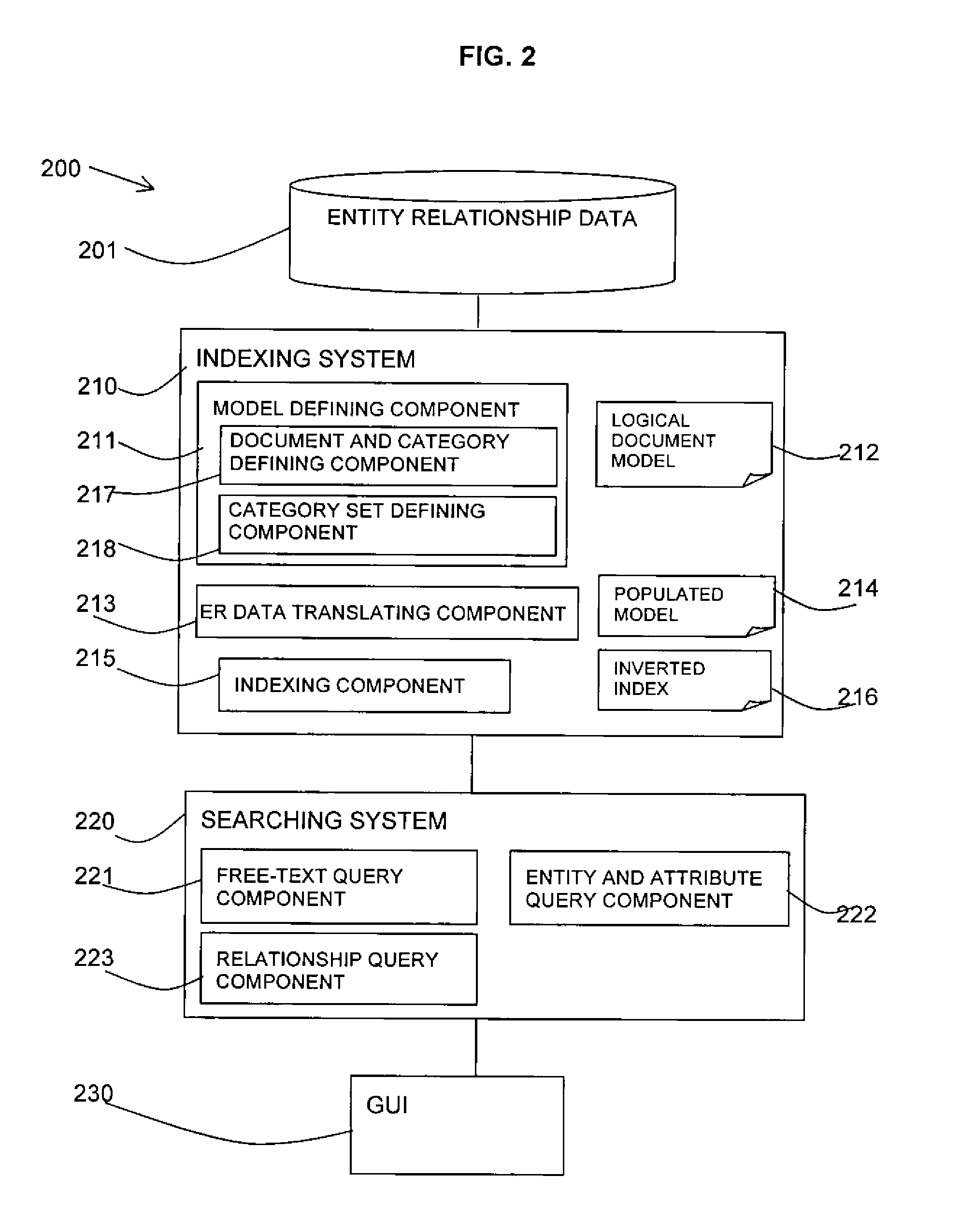Indexing and searching entity-relationship data
a technology of entity relationship and data, applied in relational databases, database models, instruments, etc., can solve the problems of lack of proper query interfaces, rapid expansion of data complexity and diversity,
- Summary
- Abstract
- Description
- Claims
- Application Information
AI Technical Summary
Benefits of technology
Problems solved by technology
Method used
Image
Examples
example query 1
[0059]The query predicate Person.*: * (alternatively Person.* or Person.) can be used to return all person entities. A specific person entity may be further returned by using that entity's key; e.g., the query Person.key:12345 will return a single person entity identified by the specified person key.
example query 2
[0060]Return all person entities whose name is “John” and age is between 20 to 40:[0061]a. Person.name:“John” AND Person.age:[20 TO 40]
Free-Text Predicates
[0062]As already mentioned, issuing structured queries such as the aforementioned entity attribute queries requires some level of knowledge regarding structure. However, such knowledge is usually attained only by system experts, while the majority of users cannot translate the information need into structured queries. Free-text query predicates treat entities as text documents and therefore query the entities' content regardless of their structure. A free-text query predicate may include keywords, phrases, prefixes (e.g., ne*), etc. As an example, the query predicate “CNN News” (or *.*:“CNN News”) can be used to return entities that contain this phrase in at least one of their attribute values. (CNN is a trade mark of Cable News Network.) The following example demonstrates how results can be restricted to a specific entity type.
example query 3
[0063]Return document entities related to “CNN News”:[0064]Document. AND “CNN News”
Relationship Predicates
[0065]A relationship query predicate can be used to retrieve entities based on relationships they participate in. For that, a relationship predicate allows to define the entity relationship participation pattern, including the type of relationship, its relationship member patterns and their roles, and relationship attributes that limit the search according to some context. The result of a relationship query predicate is a set of entities that participate in the relationship subject to the relationship specified pattern.
[0066]More formally, a relationship predicate is defined by the following expression:
relType ((WITH *)|(withExp (AND withExp)*))
relType specifies a specific relationship type or * if any type should be considered. withExp further denotes an expression that takes the form:
WITH (relMemPred|relAttPred)
WITH is a special operator used to describe a single relationship ...
PUM
 Login to View More
Login to View More Abstract
Description
Claims
Application Information
 Login to View More
Login to View More - R&D
- Intellectual Property
- Life Sciences
- Materials
- Tech Scout
- Unparalleled Data Quality
- Higher Quality Content
- 60% Fewer Hallucinations
Browse by: Latest US Patents, China's latest patents, Technical Efficacy Thesaurus, Application Domain, Technology Topic, Popular Technical Reports.
© 2025 PatSnap. All rights reserved.Legal|Privacy policy|Modern Slavery Act Transparency Statement|Sitemap|About US| Contact US: help@patsnap.com



